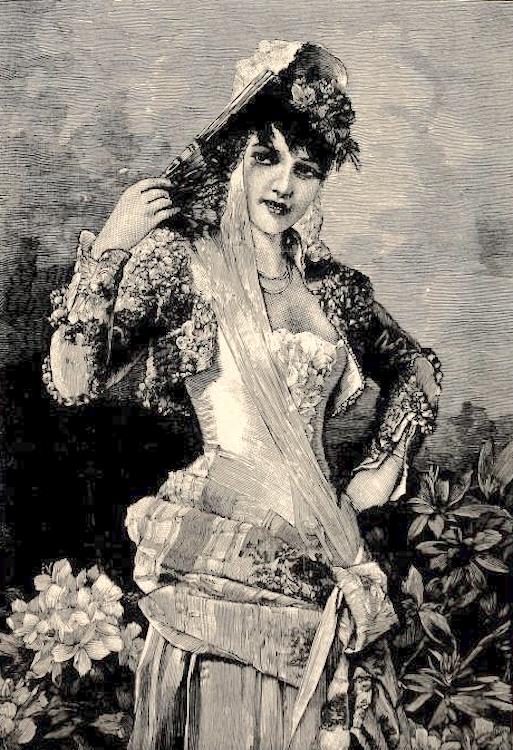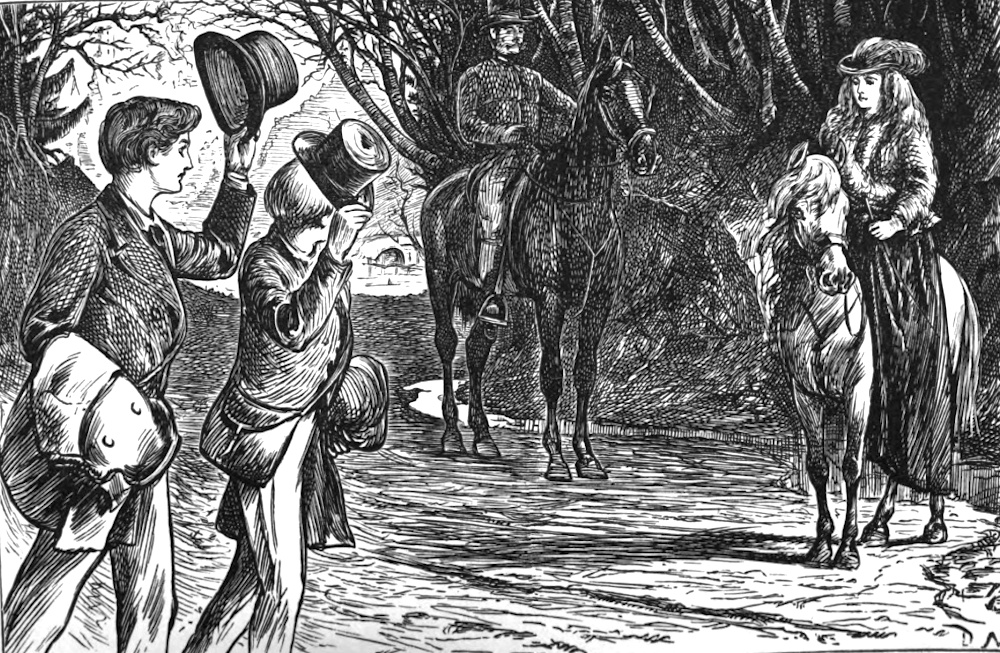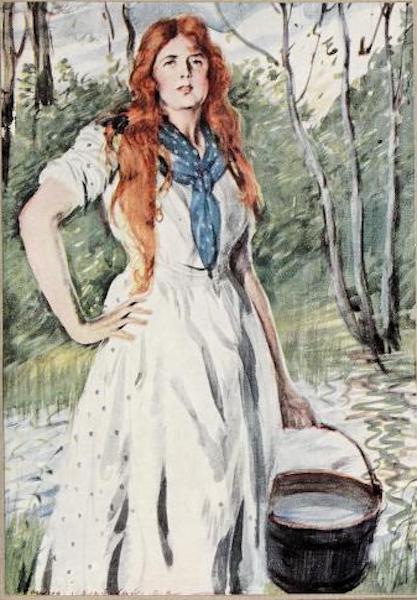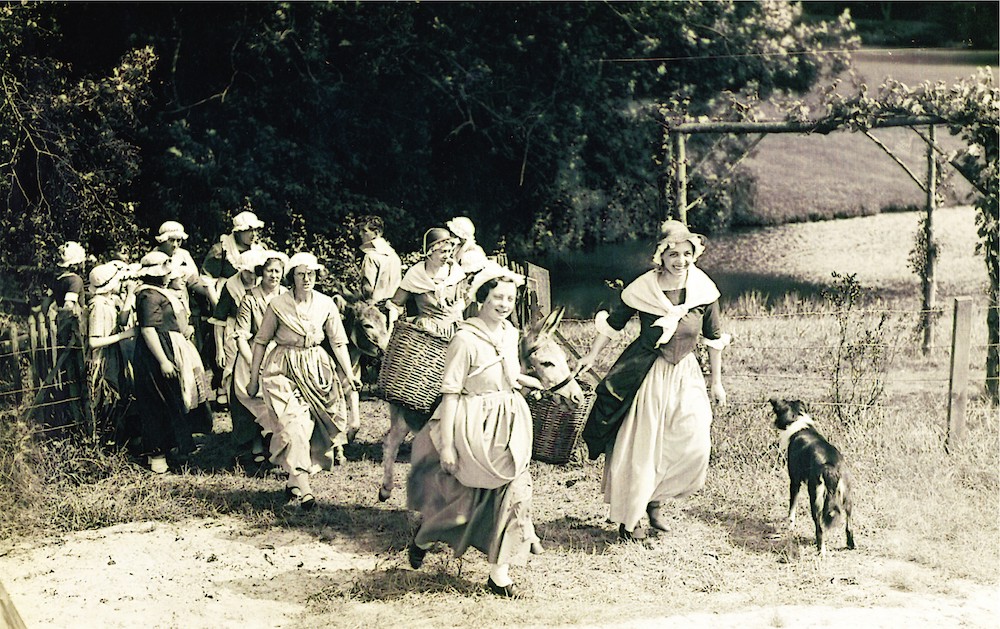
George Borrow, by Edmund J. Sullivan (Borrow, frontispiece).
In his own lifetime, George Borrow's star soon faded. After The Bible in Spain, Lavengro came as a puzzle, a disappointment, a "relative failure" (Thomas 36), so much so that John Murray was disinclined even to publish The Romany Rye — especially when confronted with an appendix in which Borrow lashed out at his earlier critics (Knapp I: 173). Wild Wales was "not much of a success" at first either (Price 11). Yet his reputation picked up again more quickly than Angus Fraser suggests in his ODNB entry on him. Borrow had a subtle influence on other Victorian authors, and his interests chimed well with those of the Celtic Revival. It is true, however, that he gained a new popularity in the late Modernist period, a popularity that has persisted to the present day.
Among Borrow's contemporaries were Matthew Arnold, whose "The Scholar-Gypsy" followed Lavengro just a couple of years later, in 1853: the very title of the poem echoes Borrow's subtitle, "The Scholar — The Gypsy — The Priest." Arnold's vision of the scholar turning to the "wild brotherhood" to learn another, more powerful kind of wisdom (l. 38), is close to Borrow's own pursuit of such knowledge. George Eliot's poem "The Spanish Gypsy," published in 1868, also takes up the unique features of the gypsy community, and deals with its ineradicable inherited traits in a way that foreshadows much of her later work. As for novelists, Charles Reade's A Terrible Temptation, which came out in 1871, features the half-gypsy "Bohemian" Reginald Bassett, whose failure to fit into upper-class English society results in his willing exile to Australia. Another Victorian author who was inspired to write about gypsies was George Meredith, whose Adventures of Harry Richmond, also published in 1871, features the unpredictable Hampshire gypsy-girl, Kiomi.



Left to right: (a) "Bright, O bright Fedalma!" the title character of George Eliot's "The Spanish Gypsy" (Eliot, facing p. 34). (b) Reginald Bassett, Charles Reade's "Bohemian bold" playing the fiddle (263). (c) "We, in good easy swing of the feet, gave her a look as we lifted our hats" — one of those unexpected, magical encounters that Geoge Meredith specialises in, as Harry Richmond and his friend Temple meet the young princess, Ottilia, in Germany (engraving by Joseph Swain, The Adventures of Harry Richmond, facing p. 641).
Meredith not only follows Borrow in giving prominence to a gypsy — a particularly characterful figure in his hero's early "adventures" — but picks up on Borrow's manner, his episodic narratives and succession of unconventional characters, and even his style. The two writers had much in common. They shared an unsettled childhood, a haphazard education, a fascination with the Celtic past (on Meredith's, see Jones 20-23), and a great love of walking. Both could tramp across country for many miles in a day. Not surprisingly, Meredith loved Borrow's work: in a letter to the critic Sir Arthur Compton-Rickett on 12 November 1906, he called Borrow "the prince of Vagabonds," whom he "never tired" of reading (Selected Letters, 191). Like Borrow's Lavengro, Harry Richmond seeks his identity as he moves between one memorable episode and the next, in a narrative that blends lived experience with fiction, and is punctuated by dramatic encounters with vividly realised characters.

Sullivan's depiction of Isopel Berners (Borrow, facing p. 186).
The outcomes of the heroes' searches are rather different: Harry Richmond eventually finds love and stability with his down-to-earth second cousin, Janet Ilchester, whereas Borrow's Lavengro finds brotherhood with his gypsy friend, the farrier Jasper Petulengro, and romance, more tentatively and less permanently, with "the poor travelling girl" Isopel Berners (Belle): "it is true he has strange ways," Belle confesses to the postilion at the end of Lavengro, "and frequently puts words into my mouth very difficult to utter, but — but —" and here she buried her face once more in her hands" (623-24). Yes, she loves Lavengro, at least for the present. Predictably, Meredith was drawn to this complicated beauty, with her colourful, rootless background. He was sorry about her abrupt disappearance in The Romany Rye (see again Meredith 191), where she leaves Lavengro after his proposal to her, and goes off to America alone.
Early in the next century, another young writer fell under Borrow's spell at the beginning of his career. "[D. H.] Lawrence greatly admired George Borrow," his first girlfriend, Jessie Chambers, recalled: "He said that Borrow had mingled autobiography and fiction so inextricably in Lavengro that the most astute critics could not be sure where the one ended and the other began. From his subtle smile I felt he was wondering whether he might not do something in the same fashion himself" (109-10). Here then was one of the likely inspirations for Sons and Lovers (1913). The gypsy Joe Boswell in Lawrence's novella The Virgin and the Gypsy, written in 1926, also comes to mind. Lawrence debunks as well as exploits "the cultural myths of Gypsies' elemental passion, association with nature, anonymity, and inarticulateness" (Nord 158), but what mainly communicates itself to the reader here is his sheer fascination with the gypsy "other." The virginal Yvette is positively mesmirised by him, and the great climactic flood at the end leaves both heoine and reader wrung out. With characters like Petulengro in Lavengro, Borrow had opened a path that Lawrence could tread with his own fierce passion.
Another important novelist who read Borrow was Virginia Woolf. Helen Southworth writes that Woolf first referred to him in a review of 1905, and reports that works by him were found in the Woolfs' library. She sees the influence of Lavengro in Orlando, in "the tone of the work, its picaresque quality, the eccentricity of many of its characters and the address to the reader" (201). She finds much to confirm such an influence in Woolf's Between the Acts, and concludes more generally that "Borrow’s unorthodox work forms part of a somewhat buried native tradition of picaresque romance, travel writing, social commentary, and antiquarian history, which includes the work of Sir Walter Scott, Henry Mayhew, William Cobbett and Bamfylde Moore-Carew [Georgian self-styled "King of the Gypsies"] among others; the first three of these names are invoked in Between the Acts" (212). It might be added that Cobbett was one of Borrow's own heroes (see Thomas 47).
Even where confirmed by an author's own comments in letters, reviews and so on, rooting out literary influence in their work is a critic's game. What matters is not so much the influence itself, but how the author has absorbed and transmuted it. Here, there is a more fundamental point to be made, and it needs to be made in connection with Wild Wales, and Borrow's interest in the Welsh, the Irish, the Scottish, the Cornish and the Manx — in the variations he found and recorded in their natural surroundings, their ways of life, and their different cultural and linguistic histories. Southworth argues that Borrow was furnishing Woolf with a means of broadening the scope of her work — of opening up "the traditionally elite modernist project." Southworth defines this opening up with reference to the cultural critic, Jed Esty. She continues by describing the impulse behind it as one that "Esty identifies in the adoption of the popular and by nature amateur neo-traditional pageant play by Woolf, Forster, and Eliot on the eve of World War II" (212).

A scene from the Abinger Pageant of 1934, for which E. M. Forster composed the words, and Ralph Vaughan Williams supplied the music. © Dorking Museum, by kind permission.
Southworth is not going off at a tangent here: the claim is a very significant one. Esty's idea is that the late modernists helped to recover British literature's "cultural particularity" (3), and he argues his case, as Southworth notes, with reference to a curious literary offshoot of modernism — the pageants that became popular at this time. One example of the "neo-traditional pageant play" that Esty examines is E. M. Forster's Abinger Pageant of 1934, held in the grounds of Abinger Rectory near Dorking in Surrey, in which a "Woodman" narrates the village history, while dramatic scenes from it are recreated for the local community (see Esty 79-82). Borrow's influence may well be sensed in such very specifically local productions, especially, in the Abinger Pageant, in the figure of the Woodman with his unparalleled lore and, equally, his far-sightedness about the environmental impact of increasing urbanisation.
It is hugely to Borrow's credit that he helped to inspire a larger cultural interest in those who lead their lives outside the mainstream, not only geographically but culturally — yet those who are, at the same time, closely linked both to old traditions, and to their natural surroundings. This is all the more important now, as everything that feeds their native roots is coming under increasing threat. Forster's pageant is not as nostalgic as it sounds (or looks, in the photograph above). It is defiant, practical. Forster's Woodman issues a fierce diatribe against modern developments: "Look into your hearts, and look into the past," he demands, "and see what direction you want to take."
George Borrow is in tune with the Zeitgeist again. Yes, he was a fine travel writer, but his place in our literary history now seems more central than that. A George Borrow Society was founded in 1991 (see bibliography) and there is a Lavengro Press which provides a platform for scholars and readers who continue to come to him. His legacy is more secure, his ideas more relevant now than ever.
Related Material
- Matthew Arnold, "The Scholar Gipsy," and the Cumnor Hills
- Thomas Hardy and D. H. Lawrence: A Literary Kinship
- Ambivalent Victorians in Modern and Postmodern Perceptions. A Review of Simon Joyce's The Victorians in the Rearview Mirror
Bibliography
Borrow, George. Lavengro: The Scholar, the Gypsy, the Priest, with twelve illustrations in colour by Edmund J. Sullivan. London: T. N. Foulis, 1914. Internet Archive. Contributed by Trent University. Web. 19 May 2020.
Chambers, Jessie. D. H. Lawrence: A Personal Record. 1935. Cambridge: Cambridge University Press, 1980.
Eliot, George. The Complete Poetical Works of George Eliot. Family ed. Illustrated by J. D. Woodward. New York: Frederick Stokes & Bro., 1888. Internet Archive. Contributed by the Library of Congress. Web. 19 May 2020.
Esty, Jed. A Shrinking Island: Modernism and National Culture in England. Princeton: Princeton University Press, 2004.
Forster, E. M. The Pageant of Abinger. A full account can be found be found here on the Historical Pageants website, and a scrapbook of the pageant itself can be consulted at the Surrey History Centre in Woking.
Fraser, Angus. "Borrow, George Henry (1803–1881), writer and traveller." Oxford Dictionary of National Biography. Online ed. Web. 13 May 2020.
Jones, Mervyn. The Amazing Victorian: A Life of George Meredith. London: Constable, 1999.
Meredith, George. Selected Letters. Ed. Mohammad Shaheen. London: Macmillan, 1997.
Nord, Deborah Epstein. Gypsies and the British Imagination, 1807-1930. New York: Columbia University Press, 2008.
Reade, Charles. A Terrible Temptation: A Story of the Day. London: Library ed., 1871.
Southworth, Helen. "Virginia Woolf's 'Wild England': George Borrow, Autoethnography, and 'Between the Acts.'" Studies in the Novel 39/2 (2007): 196-215. Accessed via Jstor.
Thomas, Edward. George Borrow, the Man and His Books. London: Chapman & Hall, 1912. Project Gutenberg. Web. 19 May 2020.
Created 21 May 2020